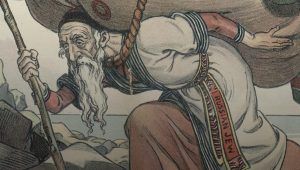Steven J. Zipperstein in Tablet:
 It began inconspicuously, as so many riots do. People jostled in a sparsely policed public square lined with Jewish-owned shops. Worshippers idled after Easter services at the nearby Ciuflea Church, some drinking steadily once services ended, and teenagers as well as Jews—restless near the end of the long, eight-day Passover festival—were all rubbing shoulders. The weather was suddenly and blissfully temperate, dry after intermittent rain.
It began inconspicuously, as so many riots do. People jostled in a sparsely policed public square lined with Jewish-owned shops. Worshippers idled after Easter services at the nearby Ciuflea Church, some drinking steadily once services ended, and teenagers as well as Jews—restless near the end of the long, eight-day Passover festival—were all rubbing shoulders. The weather was suddenly and blissfully temperate, dry after intermittent rain.
Soon it would be commonplace to juxtapose the pogrom’s horrors and its benign springtime weather. Bialik, too, would do much the same in “In the City of Killing,” while also highlighting the buoyant expectations that surfaced for Jews at the start of a fresh new century viewed against the obscenity of Kishinev’s butchery.
Details of these terrible spring days, with their changes from moist to warm, would figure among the cascade of information, small and large, amassed by teams of reporters, Jewish activists, political radicals, well-known writers, philanthropists, lawyers, and civil servants in the months following the pogrom.
More here.
